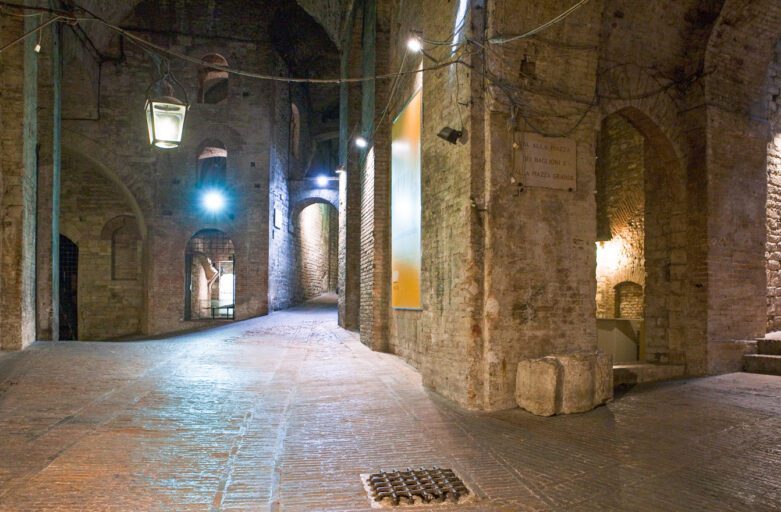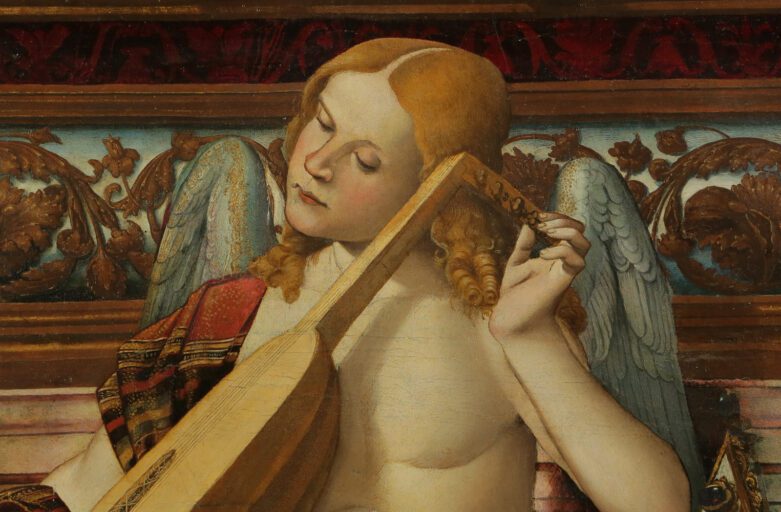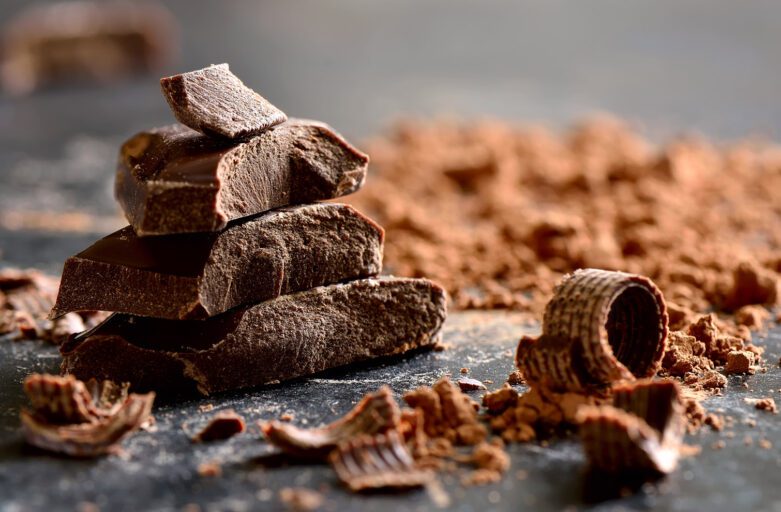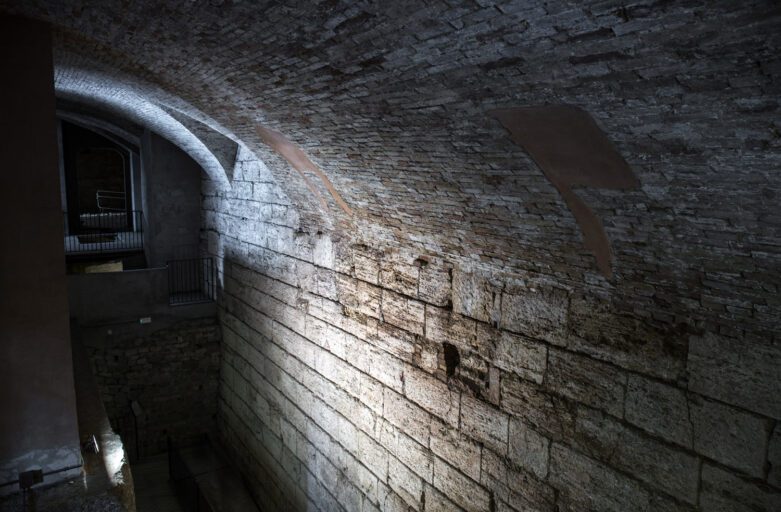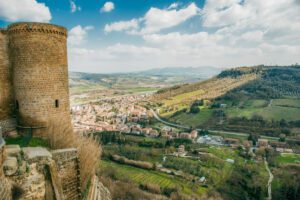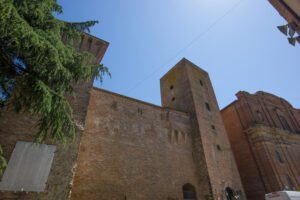The Intriguing Story of a Fortress
In Perugia's old town center, at the southern end of Corso Vannucci (Main Street) there is an area with flowerbeds, benches, and fountains, where the Palace of Perugia's Province and the equestrian monument to the first king of united Italy, Vittorio Emanuele II (1820-1878), also rise. This is where a group of buildings existed, called Rocca Paolina: a fortress built by decision of Pope Paul III in the mid-16th century.
Although only a part of that imposing structure has remained, by walking in its underground passages you will be able to experience a true citadel under the street level. This underground setting hosts many events every year, among which a small market at Christmas. All year long it is possible to see a detailed town model and a 3D video about the history of Perugia, titled Perugia Folgora. Wide spaces with high ceilings alternate with narrow alleys and small rooms.
Iron gratings, arches and vaults in bricks, embrasures that seem to watch you with suspicion, will make you relive the atmospheres of the 16th century, when the Rocca Paolina was built. It rose from 1534 onward, in order to suppress the turmoils then widespread in Perugia, so as to try to bring town life back to some degree of normality. Perugia lost the prestige it had enjoyed thanks to its good government during the Communal Era – there now loomed the fate of a town subjected to the Papal States.
The Baglionis and the “War for the Salt”
The members of the different branches of the Baglioni Family, the absolute lords of Perugia, fought against one another in armed factions. As a matter of fact, the town (unlike e.g. Florence) lacked a true Seigniory; and to make things even worse for society and economy, in 1540 the Pope imposed that they should buy their salt – at a much higher price – from Papal saltworks instead of Siena, Tuscany. Before refrigerators were invented, salt was indispensable in order to preserve food; so, to make it more expensive meant to starve a large part of the population. Perugia reacted by proclaiming itself a Republic and defying the Papal troops, who however got the better of it. As tradition goes, precisely during the so-called “war for the salt” the habit of eating pane sciapo, unsalted bread, became established. Currently, both salted and unsalted bread are sold in Perugia's bakeries.
In that context, in 1540 Pope Paul III entrusted Antonio da Sangallo il Giovane (1484 - 1546) with the mission of speeding up the already started building of the fortress. The architect also designed a fortified corridor to connect the Rocca Paolina with the southern area of Perugia.
Rocca Paolina vs. Perugia Aristocracy
The building, started in 1537, replaced the Baglioni houses that had existed in an area between two churches, Saint Ercolano eastward and Santa Maria dei Servi westward. On that occasion the houses of those prominent people, too, who had played a role in the Republic, were destroyed. One hypothesis was to turn Perugia into a Duchy in the hands of a member of the powerful Farnese family, the same as the Pope's. Therefore, a suitable palace was needed for the future Lord of Perugia – well defended inside the fortress itself. Paul III however changed his mind, and opted for a Papal palace to be designed by another famous architect, Galeazzo Alessi. About 1547, the Rocca had been completed. It was a behemoth building articulated in different blocks: a central body, a fortified corridor, and the stronghold at the end of it. What remains nowadays is nothing more than a fragment. After the National Unification of Italy in 1860, in fact, in a solemn civil rite, the destruction of the fortress was started – the end of a symbol that had been hated for three centuries. The event was celebrated in a famous poem by Giosue Carducci; some lines are reported on the back side of Carducci's monument in the Giardini (Park) named after him.
Sangallo's Job
Parallel to the fortified corridor, now an escalator takes you from the lower town area into what remains of the Rocca Paolina. On entering, you will notice very high arches made in bricks, the work of Antonio da Sangallo in order to cover the old Medieval streets and give the new palace a base. The Renaissance architect had to keep in mind the preexisting structures, among which a part of the Etruscan walls, where one of the monumental town gates opened. So, Sangallo had its embellishments removed, and moved some five meters (15 feet) forward: this is Porta Marzia, “Mars' Gate” reassembled against a brick wall, the one we can still admire nowadays in the lower section of the fortress.
While walking inside the Rocca Paolina, it is quite easy to recognize the buildings that dated back to Medieval Perugia by paying attention to the materials employed: doors, walls and everything made in stone were there from before the Rocca. In fact, it was built in bricks as a material more resistant against cannon balls – a kind of weapon that changed war methods precisely from the Renaissance.
Lost Works of Art
The palace built in the upper part of the Rocca Paolina had rooms of a refined beauty, with wall decorations made under the supervision of Giorgio Vasari (the artist and architect who worked on the Uffizi and other important projects in Florence, and the author of The Lives of the Most Excellent Painters, Sculptors, and Architects. He was a friend of Michelangelo). So, because of the 19th century destruction, a very important – or, the most important – cycle of Mannerist painting in Perugia has been lost. Lost also, though not completely, are the frescoes that embellished the house of Braccio Baglioni. Made by Domenico Veneziano in 1438, they showed the most important people of Perugia; only an armed man “survived.”
INFORMATION
Location
11, Piazza Italia, 06121 Perugia PG
Contacts
info@secretumbria.it
0755724853
